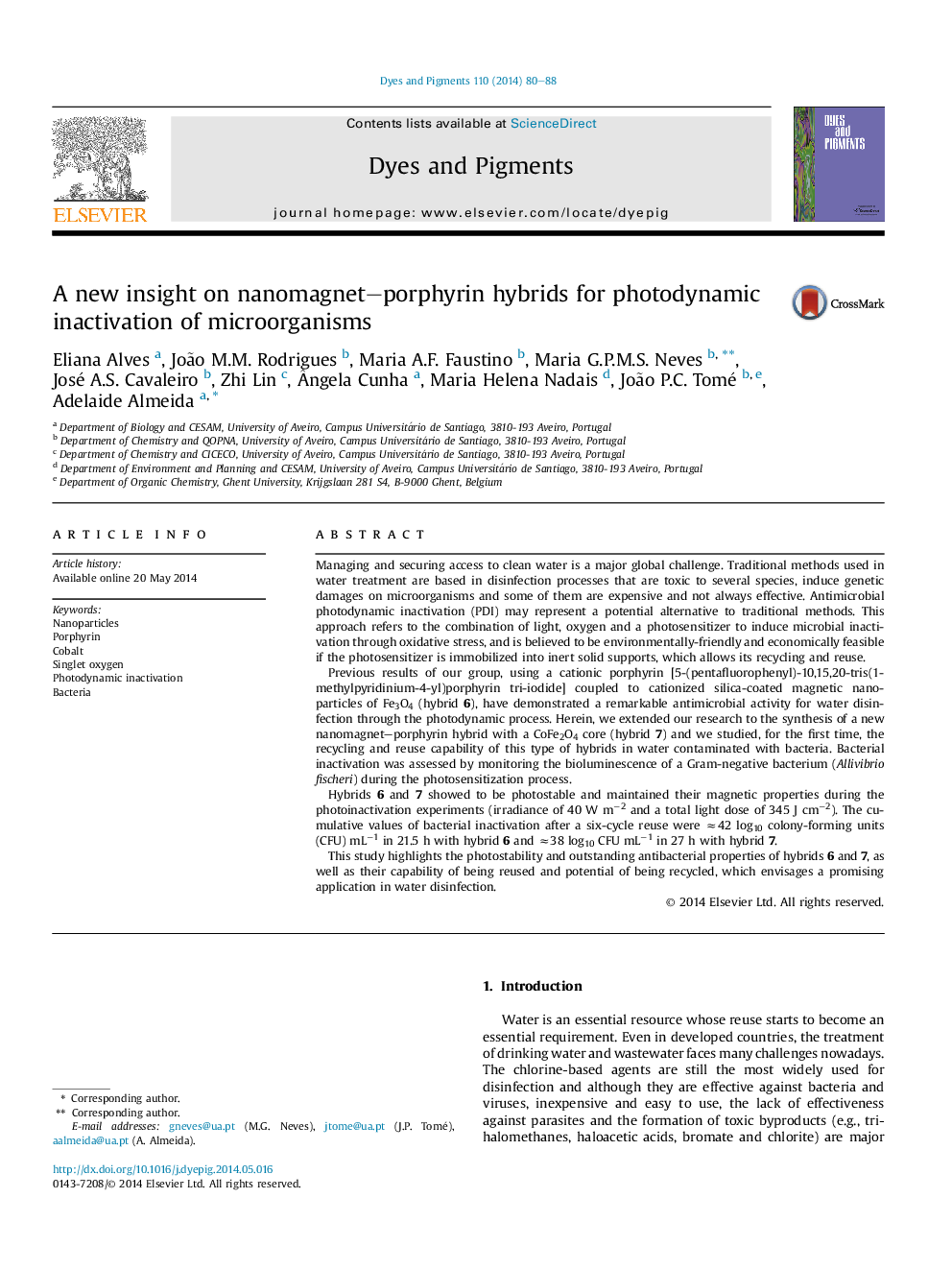| کد مقاله | کد نشریه | سال انتشار | مقاله انگلیسی | نسخه تمام متن |
|---|---|---|---|---|
| 176017 | 458930 | 2014 | 9 صفحه PDF | دانلود رایگان |
• Cationic nanomagnet–porphyrin hybrids are highly efficient in bacterial photoinactivation.
• The hybrids are photostable and can be recycled and reused for water disinfection.
• This approach can be considered environmentally-friendly and economically feasible.
Managing and securing access to clean water is a major global challenge. Traditional methods used in water treatment are based in disinfection processes that are toxic to several species, induce genetic damages on microorganisms and some of them are expensive and not always effective. Antimicrobial photodynamic inactivation (PDI) may represent a potential alternative to traditional methods. This approach refers to the combination of light, oxygen and a photosensitizer to induce microbial inactivation through oxidative stress, and is believed to be environmentally-friendly and economically feasible if the photosensitizer is immobilized into inert solid supports, which allows its recycling and reuse.Previous results of our group, using a cationic porphyrin [5-(pentafluorophenyl)-10,15,20-tris(1-methylpyridinium-4-yl)porphyrin tri-iodide] coupled to cationized silica-coated magnetic nanoparticles of Fe3O4 (hybrid 6), have demonstrated a remarkable antimicrobial activity for water disinfection through the photodynamic process. Herein, we extended our research to the synthesis of a new nanomagnet–porphyrin hybrid with a CoFe2O4 core (hybrid 7) and we studied, for the first time, the recycling and reuse capability of this type of hybrids in water contaminated with bacteria. Bacterial inactivation was assessed by monitoring the bioluminescence of a Gram-negative bacterium (Allivibrio fischeri) during the photosensitization process.Hybrids 6 and 7 showed to be photostable and maintained their magnetic properties during the photoinactivation experiments (irradiance of 40 W m−2 and a total light dose of 345 J cm−2). The cumulative values of bacterial inactivation after a six-cycle reuse were ≈42 log10 colony-forming units (CFU) mL−1 in 21.5 h with hybrid 6 and ≈38 log10 CFU mL−1 in 27 h with hybrid 7.This study highlights the photostability and outstanding antibacterial properties of hybrids 6 and 7, as well as their capability of being reused and potential of being recycled, which envisages a promising application in water disinfection.
Figure optionsDownload as PowerPoint slide
Journal: Dyes and Pigments - Volume 110, November 2014, Pages 80–88
